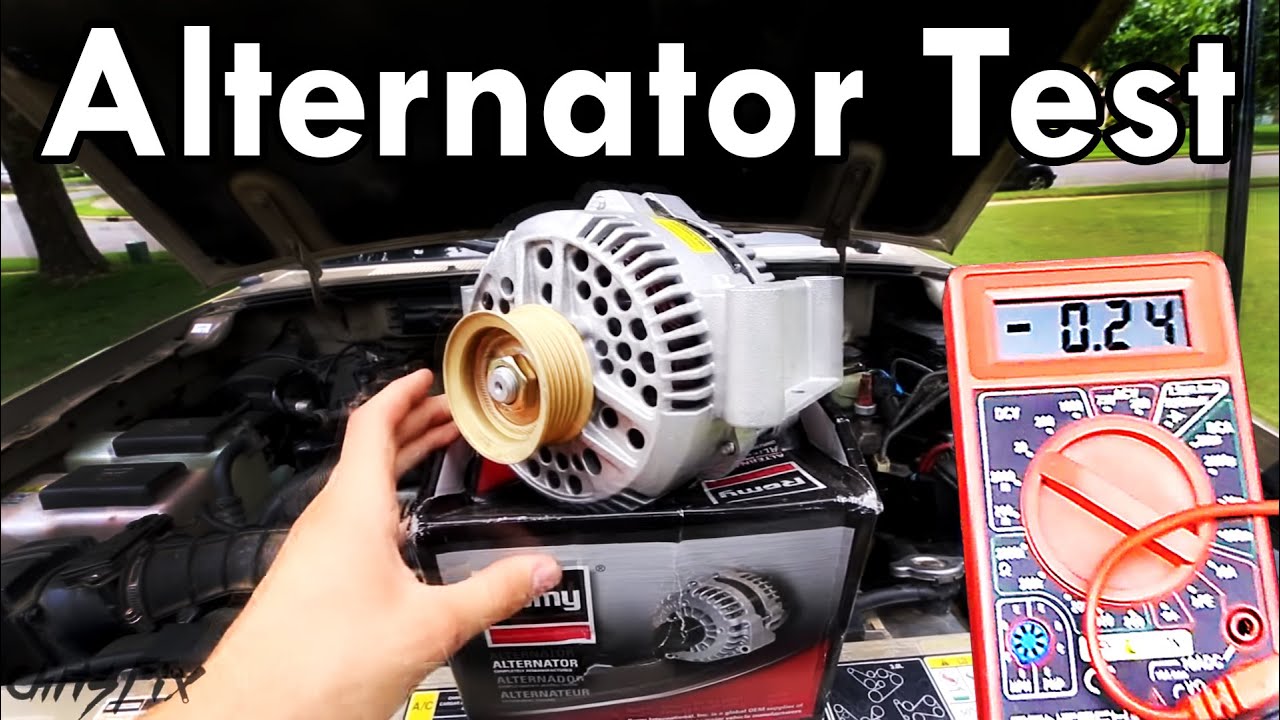Introduction: Why Testing Your Alternator Matters
A failing alternator can leave you stranded with a dead battery, dim lights, or even engine failure. Testing your alternator at home is a simple, cost-effective way to diagnose issues early. This guide covers everything from basic voltage tests to advanced diagnostics, complete with visuals and tools to ensure accuracy.
Why Test Your Alternator?
The alternator charges your battery and powers electrical systems while driving. Symptoms of a failing alternator include:
- Dimming or flickering headlights
- Battery warning light on the dashboard
- Strange noises (grinding, whining)
- Electrical failures (radio, windows)
Table: Alternator vs. Battery Symptoms
| Symptom | Alternator Issue | Battery Issue |
|---|---|---|
| Dimming Headlights | Yes (under load) | Yes (at startup) |
| Warning Light | Battery/ALT light | No |
| Electrical Failures | Progressive | Sudden |
| Jump-Start Success | Temporary relief | Full recovery |
Tools You’ll Need
Gather these items before starting:
- Digital Multimeter (20−50)
- Voltage Gauge (optional)
- Safety Gloves/Goggles
- Basic Wrench Set
- OBD-II Scanner (for advanced diagnostics)
Step-by-Step Testing Methods
1. Voltage Test with a Multimeter
Steps:
- Turn off the engine.
- Set the multimeter to DC voltage (20V range).
- Connect red probe to battery’s positive (+) terminal, black to negative (-).
- Check baseline voltage (healthy battery: 12.4–12.7V).
- Start the engine. Voltage should rise to 13.8–14.8V.
- Rev the engine to 2,000 RPM. Stable voltage = healthy alternator.
Table: Voltage Interpretation
| Voltage Reading | Diagnosis |
|---|---|
| Below 12.4V (engine off) | Weak/dead battery |
| Below 13.8V (engine on) | Faulty alternator |
| Above 14.8V | Overcharging (regulator issue) |
2. Visual Inspection
- Check Belt Tension: A loose serpentine belt can cause slippage.
- Look for Corrosion: Clean battery terminals if corroded.
- Inspect Wiring: Frayed or disconnected wires disrupt charging.
3. Load Test
Turn on high-power accessories (AC, headlights, radio) while monitoring voltage. A healthy alternator maintains 13.5V+ under load.
4. OBD-II Scanner Check
Advanced scanners can detect alternator-related codes like P0562 (Low Voltage) or P0620 (Alternator Control Circuit).
Common Mistakes to Avoid
- Testing with a weak battery (recharge or replace first).
- Ignoring belt wear (replace cracked/glazed belts).
- Skipping safety gear (battery acid risks).
Table: Mistakes & Solutions
| Mistake | Solution |
|---|---|
| Testing a cold battery | Warm up the engine first |
| Misreading multimeter | Double-check settings |
| Overlooking wiring | Inspect all connections |
When to Replace Your Alternator
Replace the alternator if:
- Voltage tests consistently fail.
- Grinding/whining noises persist.
- Electrical systems malfunction despite a healthy battery.
Repair vs. Replacement Cost
| Action | Cost Range |
|---|---|
| Alternator Repair | 150–400 |
| Full Replacement | 400–1,000+ |
Checklist: DIY Alternator Test
Download our free PDF checklist to ensure you don’t miss a step:
- Pre-test safety precautions.
- Multimeter setup and baseline readings.
- Visual inspection guidelines.
- Load test procedures.
- Post-test verification.
[Download Alternator Test Checklist PDF Here]
FAQs: Your Questions Answered
Q1: Can a bad alternator drain a new battery?
A: Yes. A faulty alternator won’t charge the battery, leading to drainage.
Q2: How often should I test my alternator?
A: Test it annually or if you notice electrical issues.
Q3: Can I test an alternator without a multimeter?
A: Use a voltage gauge or visit a parts store for free testing.
Q4: Why does my alternator whine?
A: Worn bearings or a loose belt. Address immediately to avoid failure.
Q5: Is driving with a bad alternator safe?
A: No. It can strand you or damage the battery/ECU.
Key Graphics
- Alternator Anatomy: Labeled diagram showing rotor, stator, and diodes.
- Voltage Test Visual Guide: Step-by-step multimeter setup images.
- Belt Tension Examples: Proper vs. loose belt comparison.
- OBD-II Code Chart: Common alternator-related trouble codes.
Expand Your Automotive Knowledge 📝
Explore 500+ Free Expert-Curated Guides
🚗 Learn New Skills
From basic maintenance to advanced repairs — clear, actionable tutorials for every skill level.
🌍 Access Anywhere
Mobile-friendly guides with HD visuals. No downloads required.
- Guides & Tutorials
- Car Maintenance 101
- Diagnostics & Troubleshooting
- Seasonal Maintenance
- Budget-Friendly Repairs
- Electrical Systems Guide
- Car Safety & Reliability
- Tools & Product Reviews
- Routine Maintenance
- Car Modifications & Upgrades
- Buying/Selling Guides
- Eco-Friendly Car Care
- Advanced Repairs
- Car Laws & Compliance
- Emergency Repairs
- Future Car Tech


